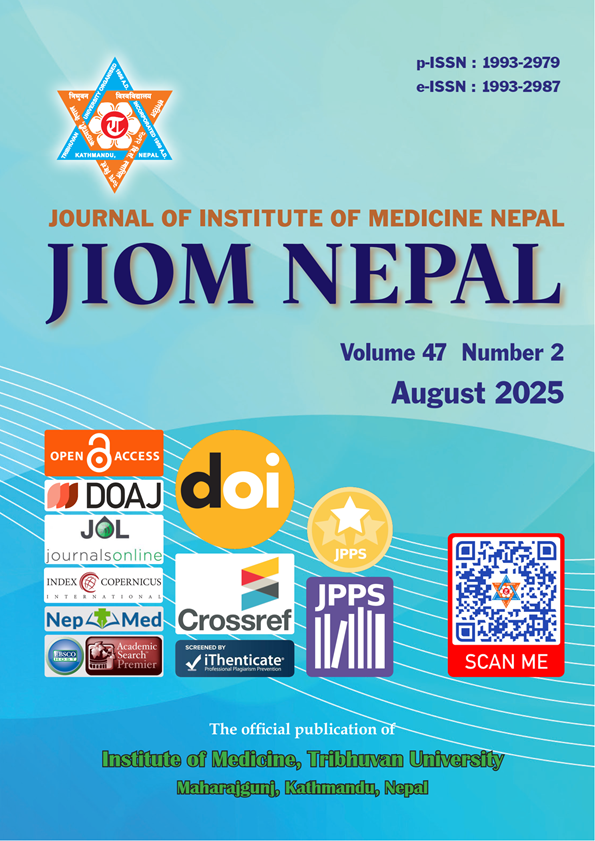Sexual Dimorphism in Permanent Mandibular Canine
DOI:
https://doi.org/10.59779/jiomnepal.1394Abstract
Introduction:
Sexual dimorphism in mandibular canines, which are stable and decay-resistant, aids sex determination. Studies have extensively documented odontometric traits and sexual dimorphism in various ethnic groups. This study sought to assess sexual dimorphism in the mesiodistal diameters of mandibular canines.
Methods:
A cross-sectional study was conducted at People’s Dental College and Hospital, involving 120 participants (60 males, 60 females; equal numbers of Brahmin, Chhetri, and Newa, aged 18 and above). Mesiodistal widths of healthy mandibular canines, free of pathology, spacing, or rotation, were measured using a Digital Vernier caliper. Data were analyzed with SPSS version 16 after entry into Microsoft Excel.
Results:
Males exhibited significantly larger mesiodistal widths (right: 7.42±0.32 mm, left: 7.24±0.36 mm) than females (right: 6.78±0.23 mm, left: 6.62±0.29 mm) (p < 0.001). There was notable sexual dimorphism in the mesiodistal diameters of mandibular canines between the sexes, with the right canine showing a greater degree of dimorphism (9.45%) than the left (9.36%). Among three ethnic groups, there was the highest dimorphism rate of 10.38% on the right and 10.22% on the left among Brahmins, followed by Newa at 9.29% on the right and 8.24% on the left, and Chhetri at 8.34% on the right and 9.80% on the left.
Conclusions:
Mandibular canine mesiodistal width demonstrates significant sexual dimorphism in Newa, Brahmin, and Chhetri populations, with Brahmins showing the greatest difference. These findings support its forensic utility for sex estimation in Nepal, though integration with additional markers is advised due to measurement overlaps. Ethnic-specific databases are needed to enhance forensic applications.
Published
Issue
Section
Categories
License
Copyright (c) 2025 Journal of Institute of Medicine Nepal

This work is licensed under a Creative Commons Attribution-NonCommercial 4.0 International License.















